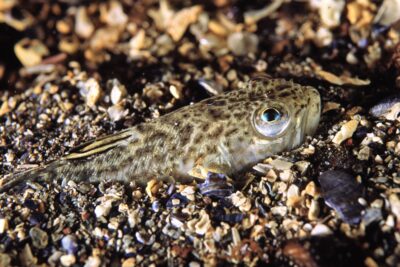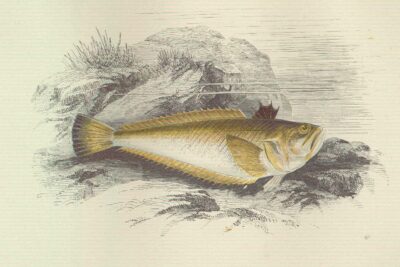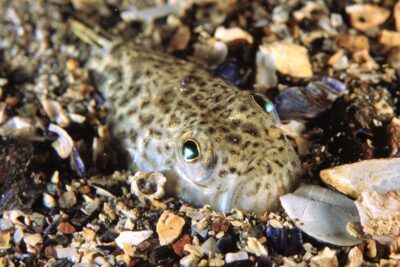Weever Fish
Weever Fish Stings
How to Avoid Them*
* & how to treat them, should you be unlucky enough to stand on one!

Weever fish are usually quite small, but some can grow to over 30cm in length. Found throughout Europe, they often appear in the North Sea and the East Atlantic Ocean, which means they’re commonly seen in coastal waters around the UK – including along the Cornish coast.
Unlike most fish, weever fish sink when they stop swimming. They spend much of their time buried in the sand, lying in wait. Remarkably, they can also survive for extended periods out of the water, which is why they’re sometimes found on beaches too.
 Naturalist Jonathan Couch’s sketch of a yellow weever fish highlighting its venomous dorsal fin.
Naturalist Jonathan Couch’s sketch of a yellow weever fish highlighting its venomous dorsal fin.
🐟 How to Identify a Weever Fish
Weever fish are masters of disguise. Their sandy-yellow scales blend perfectly with the seabed, making them very difficult to spot. What gives them away is their large, top-set eyes – ideal for keeping a lookout while buried in the sand – and their distinctive black dorsal fin, which sticks out above the surface. That fin is equipped with venomous spines, so it’s wise to tread carefully.
⚠️ How Do Weever Fish Sting?
Unlike jellyfish or stingrays, weever fish don’t swim up to you. Instead, they lie in wait, buried in shallow sand near the shoreline. Most stings happen when unsuspecting beachgoers step on them barefoot.
Their needle-sharp dorsal spines inject venom when pressure is applied – usually from the sole of a foot. It’s a painful surprise for many paddlers!

🩹 How to Treat a Weever Fish Sting
If you’re unlucky enough to be stung, don’t panic – treatment is relatively straightforward:
Find hot water – Soak the affected area in water as hot as you can comfortably tolerate (not scalding). The heat helps to break down the protein-based venom and ease spasms.
Let it bleed – There’s no anti-venom, but allowing the wound to bleed slightly can help flush out toxins. Blood loss will be minimal.
Manage the pain – The worst discomfort typically peaks around 30 minutes after the sting, then gradually eases. Painkillers can help you get through it.

😣 How Painful Is a Weever Fish Sting?
Most people compare it to a bee or wasp sting – sharp and uncomfortable, but short-lived.
Typical symptoms include:
🔹Swelling
🔹Numbness
🔹Itching
🔹Headaches or joint pain
🔹Occasionally, vomiting
🚨 If you experience severe symptoms like difficulty breathing or signs of an allergic reaction, seek emergency medical attention immediately.
🏖️ What to Do if You’re Stung on the Beach
Check for spines – Make sure no fragments are left in the wound. If there are, remove them gently with tweezers.
Seek help – Head straight to the nearest lifeguard. They’ll have hot water on hand and can assess whether you need further medical treatment.
 Image by Willfried Wende from Pixabay
Image by Willfried Wende from Pixabay
👟 Can Weever Fish Sting Through Shoes?
Good news – wearing beach shoes or water shoes can protect your feet from weever fish stings. While they might not be ideal for swimming, they’re great for paddling or walking on sandy shores.
💡 Tip: If you’re barefoot, shuffle your feet through the sand rather than taking big steps. This can help disturb any buried fish and reduce the chance of stepping directly on one.
📅 When Are Weever Fish Most Common?
Weever fish are especially active in the warmer months, typically from June to September, and sometimes even into October. They inhabit soft sands from the shallow sea floor right up to the high-tide line, making many popular beaches their ideal hiding spot.
Stay safe and enjoy the sea this summer – a little awareness goes a long way!

